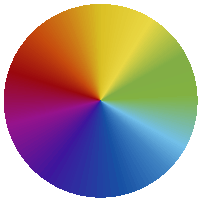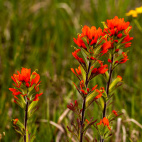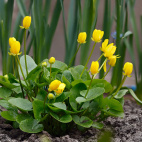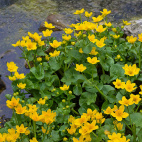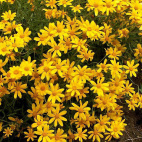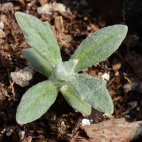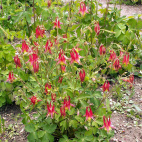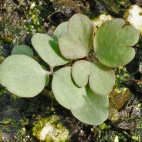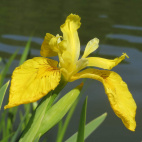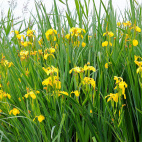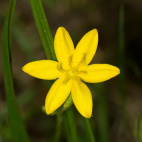Color
Availability
USDA Zone
Region
Type
Duration
Season
Germination
Soil
Sunlight
Height
Use
Narrow Your Search
Color
Availability
USDA Zone
Region
Type
Duration
Season
Germination
Soil
Sunlight
Height
Use
Wildflower Seeds - Northern Region
The Northern region is home to our Canadian friends in the eastern provinces, as well as the northern-most part of the Eastern US. This area is characterized by a long, cold winter with lots of snow, and a short humid summer that only lasts about 3 or 4 months. Most of the area is classified as a UDSA Growing Zone 4 or less, and the species that grow here have interesting ways to perpetuate themselves in spite of the short growing season. There are a lot of forests and wetlands in this region, so adequate moisture is hardly ever a problem. Look up your growing zone to make sure that the Northern wildflower seeds that you want to grow are winter hardy. Alternatively, just order annual flower seeds online so that the plant does not need to make it through the winter, but can reseed itself and come back from seed the next year.
-
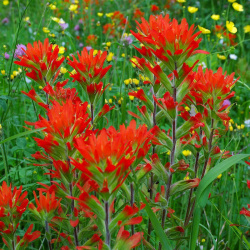 Indian Paintbrush Seeds
Castilleja coccinea
Paint the landscape with these brilliant red blooms! One of the most well-known and loved wildflowers, this variety grows across much of the western United States and can tolerate drought quite well.Quick View$3.96 Pkt - $300.00 / Oz
Indian Paintbrush Seeds
Castilleja coccinea
Paint the landscape with these brilliant red blooms! One of the most well-known and loved wildflowers, this variety grows across much of the western United States and can tolerate drought quite well.Quick View$3.96 Pkt - $300.00 / Oz -
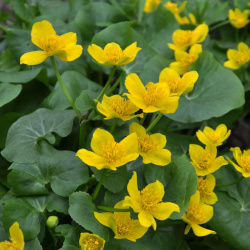 Store in the FridgeOut Of Stock
Marsh Marigold Seeds
Caltha palustris
Traditionally known as cowslips or kingcups, marsh marigolds often bring the first spring color to their native marsh. Thriving in bogs and swamps, they also make a lovely addition to a water garden.Quick View$3.75 Pkt - $200.00 / Oz
Store in the FridgeOut Of Stock
Marsh Marigold Seeds
Caltha palustris
Traditionally known as cowslips or kingcups, marsh marigolds often bring the first spring color to their native marsh. Thriving in bogs and swamps, they also make a lovely addition to a water garden.Quick View$3.75 Pkt - $200.00 / Oz -
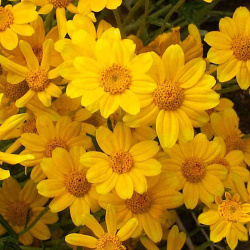 On Sale!
Oregon Sunshine Seeds
Eriophyllum lanatum
Found in the western United States, this bright wildflower truly brings sunshine in its wake. The drought-tolerant plant springs up in dry and rocky locations in the wild but can be naturalized to most garden settings.Quick View$3.48 Pkt - $21.00 / Oz
On Sale!
Oregon Sunshine Seeds
Eriophyllum lanatum
Found in the western United States, this bright wildflower truly brings sunshine in its wake. The drought-tolerant plant springs up in dry and rocky locations in the wild but can be naturalized to most garden settings.Quick View$3.48 Pkt - $21.00 / Oz -
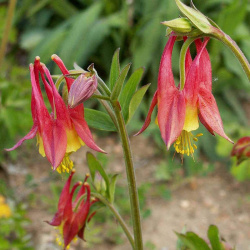 Wild Columbine Seeds
Aquilegia canadensis
Especially attractive to hummingbirds, this wildflower is a perfect choice for nature-lovers. The delicate red and yellow blossoms can grow in the open garden, but they seem to do better with some shelter and shade.Quick View$3.48 Pkt - $26.00 / Oz
Wild Columbine Seeds
Aquilegia canadensis
Especially attractive to hummingbirds, this wildflower is a perfect choice for nature-lovers. The delicate red and yellow blossoms can grow in the open garden, but they seem to do better with some shelter and shade.Quick View$3.48 Pkt - $26.00 / Oz -
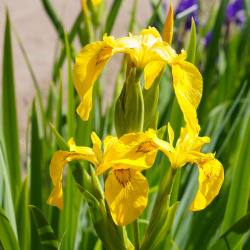 Out Of Stock
Yellow Iris Seeds
Iris pseudacorus
According to legend, the golden fleur-de-lis of France is a stylized version of this yellow iris, which grows wild throughout Europe. The ornamental plant came to North America in the early 20th century and became quite widespread and even invasive.Quick Viewx
Out Of Stock
Yellow Iris Seeds
Iris pseudacorus
According to legend, the golden fleur-de-lis of France is a stylized version of this yellow iris, which grows wild throughout Europe. The ornamental plant came to North America in the early 20th century and became quite widespread and even invasive.Quick ViewxYellow Iris Seeds
Iris pseudacorus
According to legend, the golden fleur-de-lis of France is a stylized version of this yellow iris, which grows wild throughout Europe. The ornamental plant came to North America in the early 20th century and became quite widespread and even invasive.
$3.96 Pkt - $136.00 / Oz -
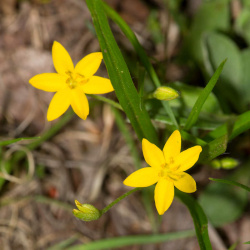 Out Of Stock
Yellow Star Grass Seeds
Hypoxis hirsuta
Tiny yellow star-shaped flowers appear on this tufted grass-like plant. This attractive perennial is perfect for rock gardens, but it is so rare that the seeds are often not available.Quick Viewx
Out Of Stock
Yellow Star Grass Seeds
Hypoxis hirsuta
Tiny yellow star-shaped flowers appear on this tufted grass-like plant. This attractive perennial is perfect for rock gardens, but it is so rare that the seeds are often not available.Quick ViewxYellow Star Grass Seeds
Hypoxis hirsuta
Tiny yellow star-shaped flowers appear on this tufted grass-like plant. This attractive perennial is perfect for rock gardens, but it is so rare that the seeds are often not available.
$3.96 Pkt - $136.00 / Oz
The Northern region is home to our Canadian friends in the eastern provinces, as well as the northern-most part of the Eastern US. This area is characterized by a long, cold winter with lots of snow, and a short humid summer that only lasts about 3 or 4 months. Most of the area is classified as a UDSA Growing Zone 4 or less, and the species that grow here have interesting ways to perpetuate themselves in spite of the short growing season. There are a lot of forests and wetlands in this region, so adequate moisture is hardly ever a problem. Look up your growing zone to make sure that the Northern wildflower seeds that you want to grow are winter hardy. Alternatively, just order annual flower seeds online so that the plant does not need to make it through the winter, but can reseed itself and come back from seed the next year.


